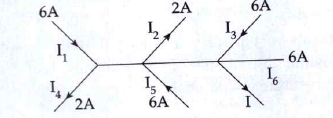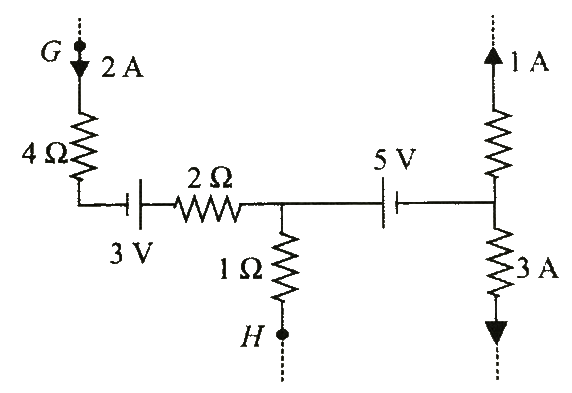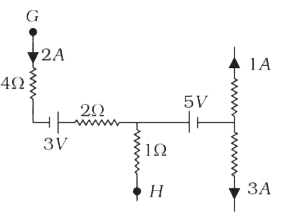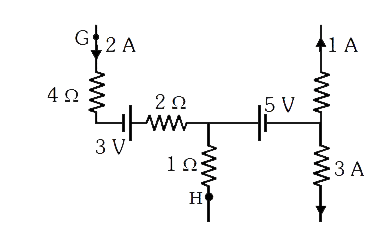If V = nvVg then show that X = G(nv−1).Solution in Marathi
Step by step video & image solution for If V = n_v V_g then show that X = G(n_v -1). by Physics experts to help you in doubts & scoring excellent marks in Class 12 exams.
Updated on:21/07/2023Topper's Solved these Questions
- Current ElectricityBOOK - CHETANA PUBLICATIONCHAPTER - Current ElectricityEXERCISE - Exercise
92 Videos
- AC CIRCUITSBOOK - CHETANA PUBLICATIONCHAPTER - AC CIRCUITSEXERCISE - Exercise
122 Videos
- Dual Nature of Radiation and MatterBOOK - CHETANA PUBLICATIONCHAPTER - Dual Nature of Radiation and MatterEXERCISE - EXERCISE
89 Videos
Similar Questions
(1)In the following circuit, calculate the value of the current (I).

View SolutionA LCR series circuit has the impedance of 240 ohm. If R = 120Ω, find the power factor of the circuit.
View SolutionDetermine frequency and wavelength of a photon having energy 1.3eW.
View SolutionIn the part of a circuit shown in fig. 5.266, the potential difference (VG−VH) between points G and H will be

View SolutionA medium has nv=1.56,nr=1.44. Then its dispersive power is:
View SolutionIf f(a)=2,f'(a)=1,g(a)=−1 and g'(a)=2, show
that limx→ag(x)f(a)−f(x)g(a)x−a=5
View SolutionLet g(x)>0andf'(x)<0,∀x∈R, then show
g(f(x+1))<g(f(x−1))
f(g(x+1))<f(g(x−1))
View Solutionf(x)=(1+x)
g(x)=(2x−1)
Show that fo(g(x))=go(f(x))
View SolutionIf g(x) is the inverse of f(x) an d f'(x)=11+x3, show that g'(x)=1+[g(x)]3.
View SolutionIn the circuit shown, the potential difference between the points G and H, VG−VH is equal to _________ V.

View Solutionf(a)=2, f'(a)=1, g(a)=−1, g'(a)=2 হলে দেখাও যে, limx→ag(x)f(a)−g(a)f(x)x−a=5
View Solutionचित्र में दर्शाये एक परिपथ के भाग में G तथा H बिन्दुओं के मध्य विभवान्तर (VG−VH) होगा (Volt में) :-

View SolutionIf n_v, n_r, n_b are the refractive indices of violet, red and blue light respectively, in a given medium then which of the following is true?
View SolutionThe angular dispersion produced by a prism of angle 5^@ is [n_V = 1.665, n_r = 1.645]
View SolutionFrom the given data set, determine angular dispersion by the prism and dispersive power of the material for extreme colours. n_R = 1.62, n_v = 1.66, s_R = 3.1^@
View Solution
